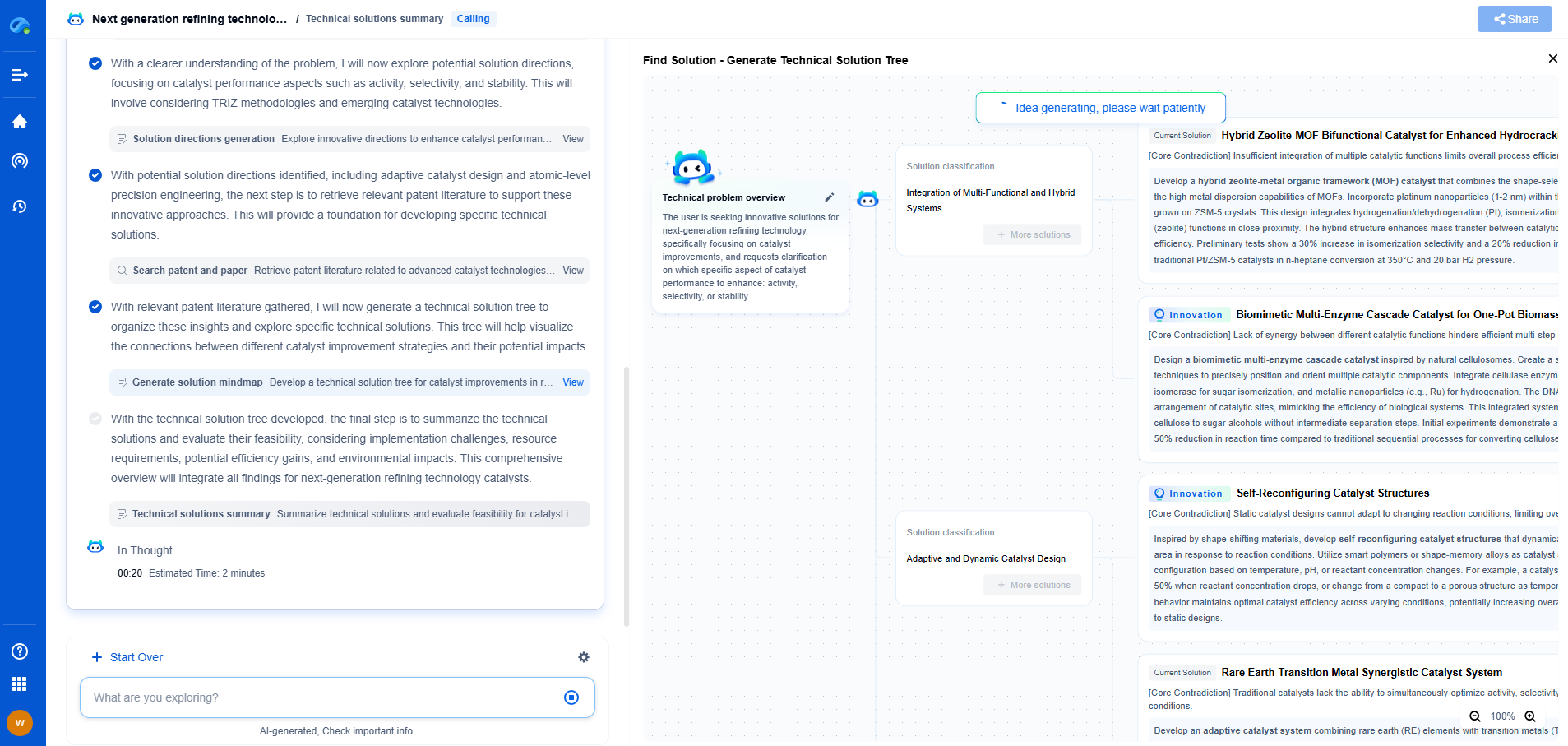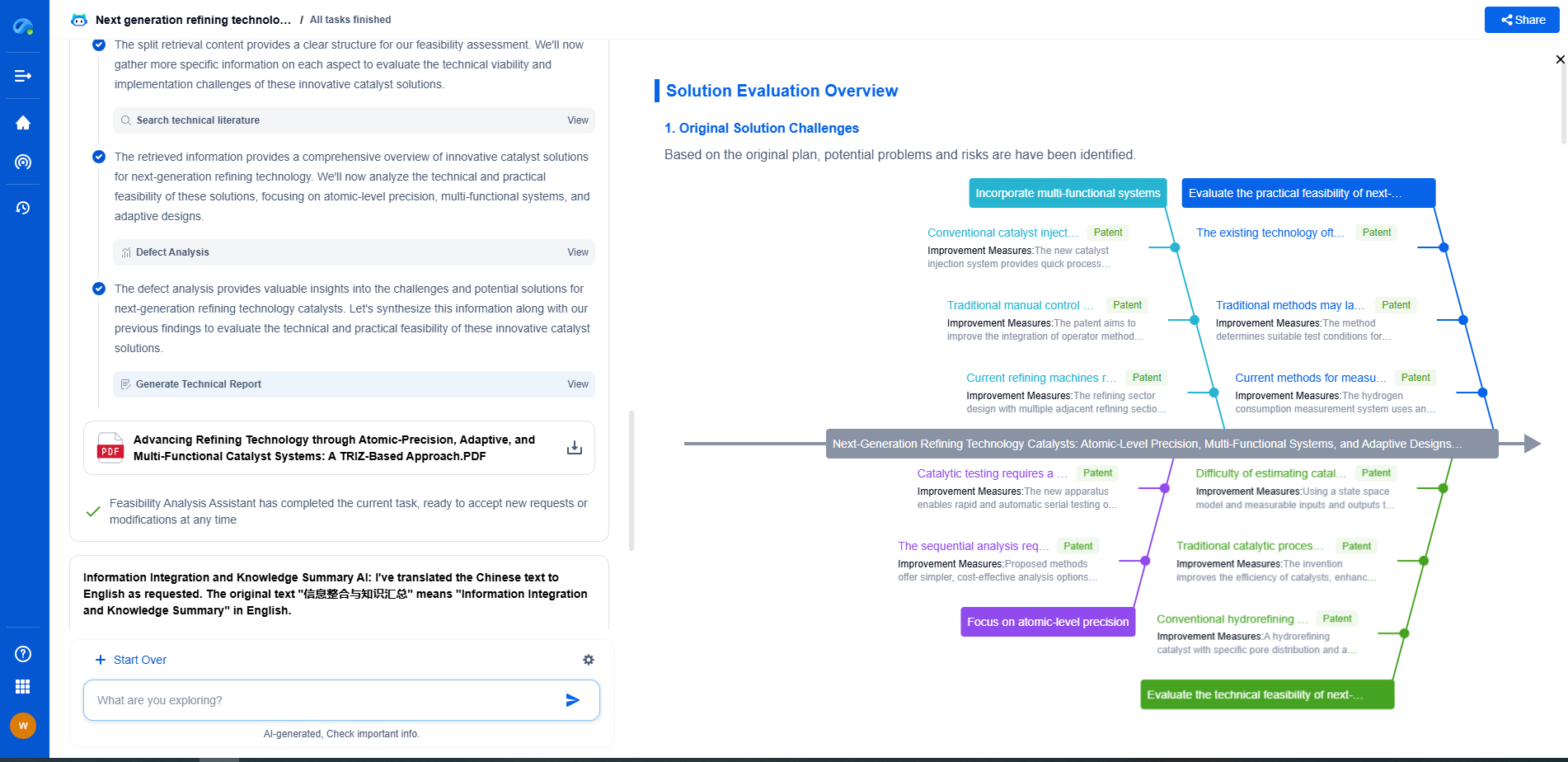How to Perform Pipe Bending Without Compromising Structural Integrity
JUN 20, 2025 |
Understanding Pipe Material and Properties
Before beginning the bending process, it's essential to understand the material and properties of the pipe you are working with. Different materials, such as stainless steel, copper, or aluminum, have unique characteristics and bending limitations. Knowing these properties will help you determine the maximum bend radius, bending method, and necessary equipment.
For example, stainless steel pipes are strong and resistant to corrosion but may require more force to bend. On the other hand, copper is more malleable and can be bent more easily but may require additional precautions to avoid kinking. Always consult the material specifications and manufacturer guidelines to ensure you are using the correct bending process for your specific pipe type.
Choosing the Right Bending Method
Several methods can be used for pipe bending, each with its advantages and limitations. Some of the common methods include:
1. **Rotary Draw Bending**: This method is often used for precision bending and is suitable for pipes that require a tight radius and a high level of accuracy. It involves using a die to guide the pipe as it is drawn around a fixed radius.
2. **Mandrel Bending**: Ideal for thin-walled pipes, mandrel bending uses a mandrel inserted into the pipe to prevent it from collapsing or losing shape during the bending process. This method is excellent for achieving smooth bends without wrinkling.
3. **Compression Bending**: This technique involves clamping one end of the pipe and bending it around a stationary bend die. It's a cost-effective method but may not be suitable for tight radius bends.
4. **Heat Induction Bending**: By applying localized heat to the area of the pipe being bent, this method allows for precise bending of large diameter pipes. It is particularly effective for materials that are challenging to bend cold.
Selecting the appropriate method for your application is crucial for maintaining the pipe's structural integrity. Consider the pipe's material, thickness, and the required bend angle when choosing the bending technique.
Calculating the Bend Radius
The bend radius is a critical factor in pipe bending. It is the distance from the center of the bend to the centerline of the pipe. A smaller bend radius can lead to increased stress on the pipe, potentially causing deformation or failure. Therefore, it is essential to calculate the bend radius carefully and ensure it meets the specifications for the pipe material.
A general rule of thumb is to maintain a bend radius of at least three times the pipe's diameter to prevent excessive stress. However, always refer to industry standards and material guidelines for precise calculations.
Preventing Common Bending Issues
Several problems can arise during pipe bending that may compromise structural integrity. Being aware of these issues and taking preventive measures is essential:
- **Kinking**: This occurs when the pipe collapses inward at the bend. Using a mandrel or ensuring an appropriate bend radius can help prevent kinking.
- **Wrinkling**: The formation of wrinkles on the inner side of the bend can weaken the pipe. Using the correct bending method and maintaining even pressure can minimize wrinkling.
- **Wall Thinning**: During bending, the outer radius of the pipe may thin out, leading to weakened sections. Monitoring pressure and using a thicker-walled pipe can mitigate this issue.
Ensuring Quality and Precision
To ensure quality and precision in pipe bending, it's essential to use the right equipment and skilled personnel. Regularly calibrating and maintaining bending machines can prevent defects and ensure consistent results.
Incorporating quality control measures, such as inspecting the pipe for defects before and after bending, can help identify potential issues early. Non-destructive testing methods, such as ultrasound or X-ray, can also be used to ensure the integrity of the bent pipe.
Conclusion
Pipe bending requires a careful balance of technique, material understanding, and precision. By choosing the right method, calculating the bend radius accurately, and taking preventive measures against common bending issues, you can achieve successful pipe bends without compromising structural integrity. Always prioritize safety and quality in your bending processes to ensure durable and reliable pipework for any application.
Transform the Way You Innovate in Pipeline Technology—with AI-Powered Intelligence
From corrosion-resistant materials to smart monitoring systems and advanced flow control mechanisms, the pipeline industry is undergoing rapid technological transformation. Yet keeping up with evolving engineering solutions, regulatory landscapes, and competitive patents can be a major bottleneck for R&D and IP teams.
Patsnap Eureka is your AI-powered research companion—built specifically for professionals in high-tech and infrastructure domains like pipeline technology. Whether you're designing high-pressure transport systems, assessing trenchless installation innovations, or safeguarding proprietary flow assurance solutions, Eureka provides real-time insights into global patent trends, emerging technologies, and R&D intelligence—all in one intuitive interface.
Empower your team to innovate faster, reduce technical blind spots, and stay ahead of industry shifts. Discover Patsnap Eureka today and bring clarity and confidence to your pipeline technology decisions.
- R&D
- Intellectual Property
- Life Sciences
- Materials
- Tech Scout
- Unparalleled Data Quality
- Higher Quality Content
- 60% Fewer Hallucinations
Browse by: Latest US Patents, China's latest patents, Technical Efficacy Thesaurus, Application Domain, Technology Topic, Popular Technical Reports.
© 2025 PatSnap. All rights reserved.Legal|Privacy policy|Modern Slavery Act Transparency Statement|Sitemap|About US| Contact US: help@patsnap.com

